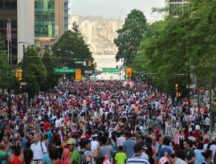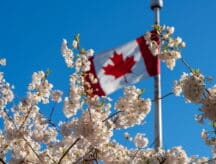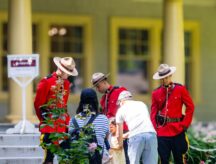ANALYSIS: Election unlikely to have major impact on Canada’s immigration system
With the federal election campaign now underway, a popular question is how the October 21 vote might affect Canada’s immigration system.
One way of answering this question is by evaluating recent history to get a sense of what Canada's immigration system could look like in the coming years.
Public opinion polling shows that the Liberals and Conservatives are effectively tied for the lead. Drawing upon their immigration policies dating to the late 1980s, it is reasonable to infer that major components of the immigration system will remain stable after October 21 should either party win the election.
Immigration Levels
Canada’s immigrant intake is poised to remain above 300,000 per year irrespective of the election result. Since the late 1980s, when the Conservatives decided to double immigration levels to above 200,000 newcomers annually, both parties have used their time in power to continue the policy of increasing levels. This is due to the bipartisan consensus that high levels of immigration are needed to alleviate the economic and fiscal strain caused by Canada’s ageing population and low birth rate.
When they last governed between 2006 and 2015, the Conservatives steadily increased immigration levels to about 260,000 newcomers per year—compared with the roughly 225,000 newcomers welcomed by the Liberals per year between 1996 and 2005.
The major difference today, however, is that Canada’s retirement rate is accelerating due to the over 9 million baby boomers set to reach the age of retirement (65 years old) within the next decade. This means the need to sustain high levels of immigration is even more important to Canada’s economy than it was in the past.
Newcomer Composition
A notable area of divergence between the two parties pertains to the composition of Canada’s newcomers. Under the previous Conservative government, about 63 per cent of Canada’s immigrants arrived under the economic class, 27 per cent under the family class, and 10 per cent as refugees.
Since 2015, the Liberals have placed a greater emphasis on the refugee class by increasing its share to about 15 per cent while reducing the share of the economic class to about 58 per cent (while keeping the family class share unchanged).
As per Canada’s 2019-2021 Immigration Levels Plan, the Liberals are aiming to maintain this composition for at least the next two years.
Based on their record when they last governed, and their public statements, the Conservatives would probably increase the economic class share to above 60 per cent while reducing the refugee class share. The official Conservative campaign platform, for instance, states they will “safeguard and emphasize economic immigration” if they win the election.
Settlement Funding
Both parties have overseen a massive increase to Canada’s settlement funding over the past 20 years. The funding goes towards services that help newcomers integrate into Canada’s economy and society such as English and French language training and employment supports.
The federal settlement envelope now stands at about $1.5 billion annually, which is a fivefold increase compared with the 2000-01 fiscal year. The Liberals began the policy of increasing settlement funding at the turn of the millennium, which the Conservatives continued during their nine years in power.
Both parties are poised to maintain high levels of immigration moving forward which suggests that settlement funding will be largely unaffected. The Conservatives are campaigning to balance the federal budget within five years of attaining power, which may result in concerns that settlement supports will be cut. However, it is worth observing that the Conservatives increased settlement funding even as they balanced the budget leading up to the 2015 election.
Expect Stability
There is no question that the Liberals and Conservatives differ on substantive immigration matters such as citizenship policy and how to handle asylum claims. But for the most part, they have far more in common on immigration.
This leads one to believe that Canada’s immigration system will continue the pattern of recent decades that has seen the country increase newcomer levels and its investment in global talent.
Find out if you are eligible for any Canadian immigration programs
© 2019 CIC News All Rights Reserved
- Do you need Canadian immigration assistance? Contact the Contact Cohen Immigration Law firm by completing our form
- Send us your feedback or your non-legal assistance questions by emailing us at media@canadavisa.com







